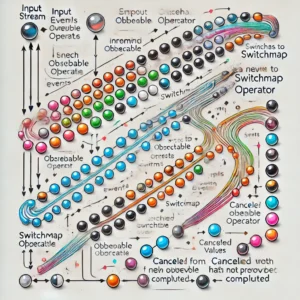A content management system (CMS) is a software application that allows users to create, manage, and publish digital content, such as text, images, and videos, on websites. CMSs provide a simple and user-friendly interface for managing website content without requiring any technical skills. There are numerous benefits of using a CMS, including increased efficiency, better collaboration, and improved website performance.
One of the main advantages of using a CMS is increased efficiency. CMSs provide a centralized platform for managing website content, making it easier for users to create, edit, and publish content. This saves time and effort, as users do not have to manually update each page of their website. Additionally, CMSs often come with built-in tools for search engine optimization (SEO), which can help improve the visibility and ranking of a website in search engine results pages (SERPs).
Another benefit of using a CMS is better collaboration. CMSs allow multiple users to access and edit website content simultaneously, making it easier for teams to work together on content creation and management. CMSs also provide version control, which allows users to track changes made to content, revert to previous versions, and collaborate more effectively. Overall, CMSs can help streamline workflows and improve productivity for businesses and organizations of all sizes.
Understanding Content Management Systems
A Content Management System (CMS) is a software application that enables users to create, manage, and publish digital content, such as web pages, blog posts, and multimedia content. CMSs provide a user-friendly interface for managing content, which eliminates the need for technical expertise in web development.
CMSs are designed to simplify the content creation process by providing users with a range of tools and features to create, edit, and publish content. These tools include:
- Content creation tools: CMSs offer a range of content creation tools, such as text editors, image and video editors, and multimedia libraries, to help users create engaging and visually appealing content.
- Content organization tools: CMSs provide tools to help users organize their content, such as categories, tags, and metadata. This makes it easier for users to find and manage their content.
- Content publishing tools: CMSs allow users to publish their content to a range of platforms, such as websites, mobile apps, and social media platforms. This ensures that their content reaches the widest possible audience.
CMSs also offer a range of benefits, including:
- Customization: CMSs provide a range of customization options, such as themes and plugins, that allow users to modify the look and feel of their website or app to suit their brand.
- Collaboration: CMSs enable multiple users to work on the same content simultaneously, which improves collaboration and productivity.
- Workflow management: CMSs provide tools to manage the content creation workflow, such as content approval and publishing workflows, which ensures that content is published on time and to a high standard.
In summary, a CMS is a powerful tool for managing digital content. It simplifies the content creation process, provides a range of tools and features to create engaging content, and offers a range of benefits, such as customization, collaboration, and workflow management.
Importance of Managing Digital Content
A content management system (CMS) is an essential tool for managing digital content. It provides a centralized platform for creating, editing, organizing, scheduling, and publishing content to the web. With a CMS, multiple contributors can work together to produce high-quality content that meets the needs of their audience.
Here are some of the key benefits of managing digital content with a CMS:
Streamlined Workflow
A CMS makes it easy to manage the content creation process from start to finish. It provides a clear workflow that ensures all contributors are on the same page and working towards the same goal. By streamlining the workflow, a CMS helps to reduce errors, save time, and increase productivity.
Improved Collaboration
With a CMS, multiple contributors can work together on the same project. This improves collaboration and ensures that everyone is working towards the same goal. A CMS also makes it easy to track changes and revisions, so you can see who made what changes and when.
Consistent Branding
A CMS allows you to create a consistent brand image across all your digital channels. By using templates and themes, you can ensure that all your content has a consistent look and feel. This helps to build brand recognition and trust with your audience.
Better Content Management
A CMS provides a centralized platform for managing all your digital content. This makes it easy to find and reuse content, and ensures that all your content is up-to-date and relevant. With a CMS, you can also easily repurpose content for different channels, such as social media or email marketing.
Increased Efficiency
By using a CMS, you can automate many of the tasks involved in managing digital content. This includes tasks such as publishing, archiving, and content scheduling. By automating these tasks, you can save time and increase efficiency, allowing you to focus on creating high-quality content that engages your audience.
Overall, managing digital content with a CMS is essential for any organization that wants to create high-quality content that engages their audience. By streamlining the workflow, improving collaboration, ensuring consistent branding, managing content more effectively, and increasing efficiency, a CMS can help you achieve your content marketing goals.
Ease of Content Creation
Content creation is the backbone of any content marketing strategy. With a Content Management System (CMS), creating new content is made easy and hassle-free. Here are some of the ways a CMS makes content creation easy:
User-Friendly Interface
One of the main benefits of using a CMS is its user-friendly interface. CMS platforms are designed to be intuitive and easy to use, even for non-technical users. The interface is typically organized in a logical manner, making it easy to navigate and find the features you need. This means that even if you’re not a web developer or designer, you can create and publish content without any technical knowledge.
WYSIWYG (What You See Is What You Get) editors
Most CMS platforms come with WYSIWYG editors, which allow users to create content using a visual interface. With WYSIWYG editors, users can see exactly what their content will look like as they create it. This makes it easy to format text, add images, and create links without having to know HTML or CSS.
Streamlined Workflow
A CMS also streamlines the content creation process by providing a centralized location for all content-related tasks. This includes creating, editing, and publishing content, as well as managing images and other media. With a CMS, content creators can collaborate and work together in real-time, which helps to speed up the content creation process.
In summary, a CMS makes content creation easy by providing a user-friendly interface, WYSIWYG editors, and a streamlined workflow. This means that even non-technical users can create and publish content quickly and efficiently.
Effective Content Management
Content management systems (CMS) provide a wide range of features to help businesses manage their content effectively. Here are some of the key features that make content management more efficient:
Content Scheduling
Content scheduling is an essential feature of any CMS. It allows users to plan and schedule content publishing in advance. This feature is particularly useful for businesses that publish content regularly, as it enables them to create a content calendar and ensure that content is published on a consistent basis. With content scheduling, users can create and schedule content for future publishing, set the publishing date and time, and automate the publishing process.
Categorization and Taxonomy
Categorization and taxonomy features help users organize content into categories and subcategories. This makes it easier to find and retrieve content later. Categorization enables users to group similar content together, while taxonomy helps to classify content based on specific criteria. With categorization and taxonomy features, users can create a hierarchical structure of categories and subcategories, assign content to specific categories, and filter content based on these categories.
Tagging and Metadata
Tagging and metadata features help users add additional information to content, making it easier to find and retrieve later. Tags are keywords or phrases that describe the content, while metadata is additional information about the content, such as author, date, and location. With tagging and metadata features, users can add tags and metadata to content, search for content based on these tags and metadata, and filter content based on specific criteria.
Content Search and Retrieval
Content search and retrieval features enable users to search for and retrieve content quickly and easily. This is particularly useful for businesses with large amounts of content, as it enables users to find content quickly and efficiently. With content search and retrieval features, users can search for content based on keywords, tags, metadata, and other criteria, and retrieve content quickly and easily.
Version Control
Version control features enable users to manage multiple versions of content. This is particularly useful for businesses that need to track changes to content over time. With version control features, users can create and manage multiple versions of content, compare different versions of content, and revert to previous versions if necessary.
In summary, content management systems provide a range of features that enable businesses to manage their content more effectively. These features include content scheduling, categorization and taxonomy, tagging and metadata, content search and retrieval, and version control. By using these features, businesses can streamline their content management processes, improve collaboration, and ensure that their content is up-to-date and relevant.
Boosting Collaboration
A Content Management System (CMS) is a powerful tool that can help businesses streamline their content creation and publishing processes. One of the key benefits of using a CMS is the boost in collaboration it provides. Here are some ways a CMS can help teams collaborate more effectively:
Real-Time Editing
With a CMS, multiple team members can work on the same piece of content simultaneously. This means that changes can be made in real-time, and everyone can see the edits as they happen. This can drastically reduce the time it takes to complete a project, as team members don’t have to wait for each other to finish their work.
User Roles and Permissions
CMS platforms allow administrators to assign different user roles and permissions to team members. This means that everyone has access to the tools and information they need to do their job, without being overwhelmed by unnecessary features or data. For example, an editor might have access to all content, while a writer might only be able to edit their own work.
Task Assignment
A CMS can also help teams stay organized by allowing administrators to assign tasks to specific team members. This ensures that everyone knows what they need to do, and when they need to do it. It also helps managers keep track of progress and identify any bottlenecks in the workflow.
Workflow Management
Finally, a CMS can help teams manage their workflow more effectively. By providing a clear overview of the content creation process, everyone can see what needs to be done, who is responsible for each task, and what the deadlines are. This can help prevent delays, reduce errors, and ensure that content is delivered on time and to a high standard.
In conclusion, a CMS can be a powerful tool for boosting collaboration within a team. By providing real-time editing, user roles and permissions, task assignment, and workflow management, a CMS can help teams work more efficiently and effectively.
Enhancing SEO
Content Management Systems (CMS) can significantly enhance a website’s SEO. By providing a platform for easy content creation and management, a CMS can help website owners and marketers optimize their website for search engines. Here are some ways a CMS can enhance SEO:
Metadata Management
Metadata refers to the information that describes a webpage, such as the title, description, and keywords. A CMS can make it easy to manage metadata for each page on a website. By optimizing metadata, website owners can improve their website’s visibility in search engine results pages (SERPs).
With a CMS, website owners can easily edit metadata for each page on their website through a user-friendly interface. This can save time and ensure that metadata is consistent across the website. Additionally, some CMS platforms offer built-in metadata optimization tools, which can analyze metadata and provide suggestions for improvement.
URL Structuring and Permalinks
URL structure and permalinks are important factors in SEO. A CMS can help website owners optimize their website’s URL structure and permalinks. By creating a clear and concise URL structure, website owners can make it easier for search engines to understand the content of their website.
With a CMS, website owners can easily customize their website’s URL structure and permalinks. This can be done through the CMS’s settings or through the use of plugins. Additionally, some CMS platforms offer built-in URL optimization tools, which can analyze URLs and provide suggestions for improvement.
Content Analysis and Optimization Recommendations
A CMS can help website owners optimize their website’s content for search engines. By analyzing content and providing optimization recommendations, a CMS can help website owners improve their website’s visibility in SERPs.
With a CMS, website owners can easily analyze their website’s content and receive optimization recommendations. This can be done through the use of plugins or built-in tools. Additionally, some CMS platforms offer content optimization features, which can analyze content and provide suggestions for improvement.
Overall, a CMS can be a valuable tool for enhancing a website’s SEO. By providing a platform for easy content creation and management, a CMS can help website owners optimize their website for search engines.
Responsive Design and Multi-Channel Publishing
Content management systems (CMS) offer a wide range of benefits to businesses of all sizes. One of the most significant advantages of using a CMS is that it allows for responsive design and multi-channel publishing. This section will explore the three sub-sections of this benefit: mobile responsiveness, cross-platform compatibility, and seamless content distribution.
Mobile Responsiveness
With the increasing use of mobile devices, it’s more important than ever to have a website that is mobile-friendly. A CMS makes it easy to create a website that is responsive to different screen sizes, ensuring that your content looks great on any device. This is achieved by using responsive design, which allows the website to adapt to the size of the screen it’s being viewed on. This means that users can access your content from anywhere, at any time, and on any device.
Cross-Platform Compatibility
A CMS also allows for cross-platform compatibility, which means that your content can be viewed on a variety of devices, including desktops, laptops, tablets, and smartphones. This is achieved by using a responsive design framework that ensures that your content is optimized for each device. This means that you don’t have to create separate versions of your content for each platform, which can save time and money.
Seamless Content Distribution
Finally, a CMS makes it easy to distribute your content across multiple channels. This means that you can publish your content on your website, social media, email, and other platforms with just a few clicks. This is achieved by using a content distribution system that allows you to manage your content from a single location. This means that you can ensure that your content is consistent across all channels, which can help to build your brand and increase engagement.
In summary, responsive design and multi-channel publishing are two of the most significant benefits of using a CMS. By using a CMS, businesses can ensure that their content is accessible on any device, optimized for each platform, and distributed seamlessly across multiple channels.
Integration with Third-Party Services
A Content Management System (CMS) can be integrated with various third-party services to enhance its functionality. Here are some of the most common third-party integrations with a CMS:
E-commerce integration
E-commerce integration allows businesses to sell their products or services online. A CMS can be integrated with popular e-commerce platforms like Shopify, WooCommerce, and Magento to provide a seamless shopping experience for customers. This integration enables businesses to manage their online store and inventory easily, process payments securely, and track orders efficiently.
Social media integration
Social media integration enables businesses to connect their CMS with popular social media platforms like Facebook, Twitter, and LinkedIn. This integration allows businesses to share their content on social media platforms, monitor social media activity, and engage with their audience. Social media integration also helps businesses to increase their reach, build brand awareness, and drive traffic to their website.
CRM and email marketing integration
CRM and email marketing integration allows businesses to manage their customer relationships and email marketing campaigns effectively. A CMS can be integrated with popular CRM platforms like Salesforce, HubSpot, and Zoho to manage customer data, track leads, and automate sales processes. Email marketing integration enables businesses to send targeted email campaigns, track email performance, and analyze customer behavior. This integration helps businesses to improve their customer engagement, increase sales, and build brand loyalty.
In conclusion, integrating a CMS with third-party services can provide numerous benefits for businesses. E-commerce integration enables businesses to sell their products online, social media integration helps businesses to connect with their audience, and CRM and email marketing integration enables businesses to manage their customer relationships effectively.
Security Benefits
Content management systems (CMS) offer a range of security benefits that make them an attractive option for businesses of all sizes. Here are some of the key security benefits of using a CMS:
User Permission Controls
One of the most significant security benefits of a CMS is the ability to control user permissions. CMS platforms allow businesses to assign different levels of access to different users, ensuring that only authorized personnel can access sensitive information. This feature is particularly important for businesses that deal with confidential data, such as financial information or personal customer data. By controlling user permissions, businesses can prevent unauthorized access and reduce the risk of data breaches.
Regular Updates
Another significant security benefit of using a CMS is that it receives regular updates. CMS providers are constantly working to improve the security of their platforms and release updates to address any vulnerabilities. By regularly updating the CMS, businesses can ensure that they are using the latest security features and protecting their data from potential threats.
Backup and Disaster Recovery Features
CMS platforms also offer backup and disaster recovery features that help businesses recover from security breaches or other disasters. By regularly backing up data, businesses can ensure that they can quickly recover lost data in the event of a security breach or other disaster. CMS platforms also offer disaster recovery features that allow businesses to quickly restore their websites in the event of a site outage or other issue.
Overall, using a CMS can provide businesses with a range of security benefits, including user permission controls, regular updates, and backup and disaster recovery features. By implementing a CMS, businesses can ensure that they are protecting their data and reducing the risk of security breaches.
Cost Efficiency
Using a Content Management System (CMS) can be a cost-efficient solution for businesses of all sizes. Here are some of the ways that a CMS can help reduce costs:
Reduced Development Time
With a CMS, developers can quickly create professional-looking websites without having to start from scratch. This can save a significant amount of time and money compared to building a website from scratch. Additionally, content creators can easily add, update, and manage content on their own, without needing to rely on developers for every change.
Scalability
A CMS can also help businesses save money by allowing them to scale their website as needed. As a business grows, a CMS can easily accommodate the increased traffic and content demands. This can be done without requiring a complete overhaul of the website, which can be expensive and time-consuming.
Lower Maintenance Costs
Another cost-saving benefit of a CMS is lower maintenance costs. A CMS can help businesses save money by reducing the need for ongoing maintenance and support. With a CMS, businesses can easily make updates and changes to their website without needing to hire a developer every time. Additionally, many CMS platforms offer automatic updates and security patches, reducing the need for ongoing maintenance and support.
Overall, using a CMS can be a cost-efficient solution for businesses looking to create and manage their website. By reducing development time, offering scalability, and lowering maintenance costs, a CMS can help businesses save money while still maintaining a professional-looking website.
Case Studies and Real-World Examples
Organizations using CMS successfully
Many organizations have successfully implemented a CMS to manage their content. For instance, the University of Georgia’s College of Agricultural and Environmental Sciences (CAES) implemented a CMS that allowed them to easily manage their website content, including news, events, and publications. With the CMS, the CAES team was able to save time and increase efficiency by streamlining their content creation and publishing process.
Another example is the National Park Service (NPS), which implemented a CMS to manage the content of its many park websites. The NPS team found that the CMS allowed them to easily update content across all of their sites, ensuring that visitors always had up-to-date information. Additionally, the CMS helped the NPS team to better organize their content, making it easier for visitors to find the information they needed.
Highlight of the specific benefits achieved
The benefits of using a CMS are numerous and varied, and can depend on the specific needs of the organization. However, some common benefits include:
- Improved efficiency: A CMS can help organizations to streamline their content creation and publishing process, saving time and increasing efficiency.
- Better organization: A CMS can help organizations to better organize their content, making it easier for visitors to find the information they need.
- Consistency: A CMS can help organizations to maintain consistency across their website, ensuring that all content is presented in a uniform manner.
- Scalability: A CMS can help organizations to easily scale their website as their needs grow, without having to worry about managing content manually.
- Improved collaboration: A CMS can help organizations to improve collaboration among team members, allowing multiple users to work on content simultaneously.
Overall, these benefits can help organizations to better manage their content, improve their website’s user experience, and increase efficiency.
Considerations When Choosing a CMS
When choosing a CMS, there are several factors to consider to ensure that it meets your website’s needs. Below are some of the most important considerations when selecting a CMS.
Budget and Scalability Requirements
One of the first considerations when choosing a CMS is the budget and scalability requirements. It is important to determine how much money you are willing to spend on a CMS and how scalable it needs to be. Some CMSs are free, while others require a license fee or subscription. Additionally, some CMSs are better suited for small websites, while others can handle large, complex websites with ease.
Content Type and Customization Needs
Another important consideration when choosing a CMS is the content type and customization needs. Different CMSs are better suited for different types of content, such as blogs, news sites, or e-commerce sites. It is important to choose a CMS that can handle your specific content needs. Additionally, customization options are important to consider. Some CMSs provide a plethora of customization options, while others are more limited in their capabilities.
Community Support and Developer Ecosystem
Lastly, it is important to consider the community support and developer ecosystem when choosing a CMS. A CMS with a large community of developers and users can provide a wealth of resources and support, including plugins, themes, and tutorials. Additionally, a CMS with a strong developer ecosystem can ensure that the CMS remains up-to-date with the latest security patches and features.
In summary, when choosing a CMS, it is important to consider the budget and scalability requirements, content type and customization needs, and community support and developer ecosystem. By taking these factors into account, you can choose a CMS that meets your website’s specific needs and requirements.
Conclusion
In conclusion, using a Content Management System (CMS) can bring numerous benefits to businesses of all sizes. A CMS can help organizations streamline their content creation and management processes, improve collaboration among team members, and enhance the overall user experience on their website.
One of the key advantages of a CMS is its flexibility and scalability. With a wide range of customization options, businesses can easily modify the look and feel of their website to match their brand identity and meet their specific needs. Additionally, CMS platforms offer a variety of plugins and integrations that can be used to extend the functionality of the website, such as adding e-commerce capabilities or integrating with social media platforms.
Another important benefit of using a CMS is its ability to improve collaboration and organization among team members. With a CMS, multiple users can contribute to content creation and management, and the system’s workflow management, content storage, and scheduling capabilities help keep everything organized.
Finally, a CMS can also improve the user experience on a website by making it easier for visitors to find and access the content they need. With features such as search functionality, navigation menus, and content categorization, a CMS can help businesses create a more intuitive and user-friendly website that keeps visitors engaged and coming back for more.
Overall, the benefits of using a CMS are clear. By implementing a CMS, businesses can improve their content management processes, enhance collaboration among team members, and create a more engaging and user-friendly website.
Frequently Asked Questions
What are the advantages of using a content management system for website management?
Content management systems (CMS) make website management easier by providing a centralized platform to create, edit, organize, and publish digital content. CMS software offers visual content editors, drag-and-drop layout tools, and revision tracking workflows that help streamline the content management process. This results in faster content updates, improved website performance, and increased productivity for website managers.
What are the key features of a content management system?
Some of the key features of a content management system include a user-friendly interface, content creation and editing tools, version control, content scheduling, and search engine optimization (SEO) capabilities. CMS software also provides plugins and add-ons that can be used to extend functionality and customize the platform to meet specific website needs.
How do content management systems improve website development projects?
Content management systems simplify website development projects by providing a standardized framework for content creation and management. CMS software allows developers to focus on designing and building website features rather than worrying about content updates and maintenance. This results in faster website development times, improved website quality, and increased developer productivity.
What are some popular types of content management systems?
Some popular types of content management systems include WordPress, Drupal, Joomla, and Magento. Each CMS has its own strengths and weaknesses, and the choice of CMS depends on the specific needs and requirements of the website.
What are some common use cases for content management systems?
Content management systems are commonly used for website development projects, e-commerce websites, blogs, and news websites. CMS software is also used by businesses to manage their internal knowledge base and documentation.
How does WordPress serve as a content management system?
WordPress is a popular content management system that provides a user-friendly interface, flexible customization options, and a wide range of plugins and themes. WordPress can be used for a variety of website types, including blogs, e-commerce websites, and business websites. The platform also offers strong SEO capabilities and a large community of developers and users who contribute to its ongoing development and improvement.






